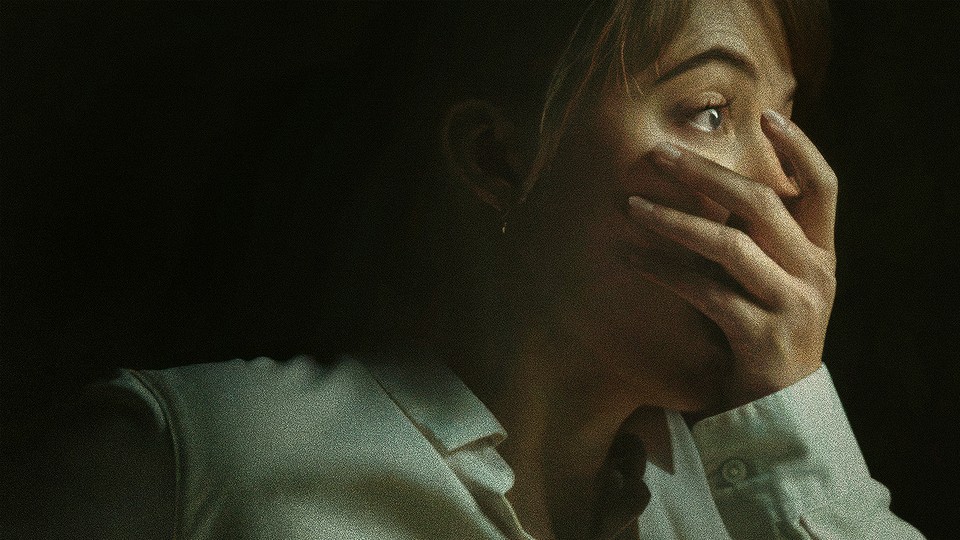The Scariest Horror Movie of the Year Is Here
4 min read
To learn about someone’s taste in horror movies, I pose a simple question: Do you seek rules, or vibes? When Freddy Krueger is attacking teenagers in their dreams, are you interested in knowing the specifics of how he’s doing that—or do you want to give yourself over to unknowable terror? Italian giallo movies tend to joyfully—and sometimes incoherently—dispense with plot detail, whereas many American slasher films are often laser-focused on the motivations and methods of their deadly protagonists.
I’m painting with a broad brush here, but I was especially struck by the rules-versus-vibes dichotomy when watching Longlegs, a freaky new piece of horror from the director Osgood Perkins. Perkins, a son of the legendary actor Anthony Perkins (best known for playing Norman Bates in Psycho), has made a chain of interesting small-budget efforts over the past decade, including the boarding-school thriller The Blackcoat’s Daughter and the fantasy film Gretel & Hansel. But Longlegs is being positioned as a breakthrough by its distributor, Neon, which has rolled out a slick marketing campaign centered on the film’s abstract, frightening imagery—an approach that helped past arthouse-horror hits like The Babadook and The Witch.
Though Longlegs has plenty of atmospheric scares, it never descends into total surreality, instead charting a path right between vibes and rules. It’s The Silence of the Lambs meets Hereditary, a tale of a serial killer who is being tracked by the FBI that weaves in some satanic panic and inexplicable psychic power. Its lead character, Agent Lee Harker (played by Maika Monroe), is a steely and sensible young fed, formed in the Clarice Starling mold. Yet what intrigues the bureau most about Lee is not her competency, but the fact that she seems to inherently know where to look for terrible things.
The film opens with a tense set piece demonstrating Lee’s strange aptitude, which pushes the FBI to assign her to Agent Carter (Blair Underwood). Carter is on the trail of a serial killer known only as “Longlegs,” a mysterious figure who, without ever being present at the crime scenes, seems to influence families into committing ghastly murder-suicides, instead leaving behind cryptic notes in Zodiac-style code. Much of the film is set in this reliably unsettling world: feds in suits grimly analyzing evidence, detachedly flipping through gory murder photos, and ignoring their home lives as they try to get inside the killer’s mind.
But from minute one, Perkins hints that there’s more to Lee’s psychic abilities, and that she might have a connection to Longlegs going all the way back to her childhood. Perkins isolates her in the frame as often as possible, driving home what a lonely and curious creature she is, while emphasizing the sense of risk encroaching on all sides. Lee lives by herself in the woods in a cabin where it’s easy to imagine intruders; outside the bureau, her only other human contact is with her mother, Ruth (Alicia Witt), who speaks in cloying non sequiturs and repeatedly asks if Lee’s been saying her prayers.
All of this is impressively scary stuff. Perkins builds out the atmosphere and aesthetics perfectly, pushing the viewer into Lee’s nervy mindset and making her work feel oppressive. As Perkins dials up the paranoia, though, he also pushes the actual investigation forward—and the more “facts” that come into view, the more audiences might lose their grasp on Longlegs. The details of how these nasty things are happening is harder to wrap one’s head around, but most important, Perkins eventually has to deliver on the anticipation for Longlegs himself, played by Nicolas Cage.
Though Cage’s name is all over the film’s advertising, his image is not; Perkins and Neon have wisely created a real air of suspense around what exactly the Oscar winner is up to as the title character. If you know anything about Cage, the answer might not surprise you: He is doing a whole lot. I won’t go into too much detail, but the character is broad, theatrical, and visually striking, a swing at creating a memorable modern movie monster that depends entirely on how you feel about Cage cranking the hysterics up one hundred percent.
What I appreciated about the third-act twists, as Lee digs into her affiliation with Longlegs and his modus operandi grows clearer, is how goofy they are: a burst of vaudevillian glitter thrown onto an otherwise moody, arty work of terrifying tonal control. The sharpness of that swerve may not work for everyone, nor will the shift from pure ambience into a bizarre effort to explain everything. But rather than dumping a bunch of inexplicably spooky stuff into the audience’s lap, Perkins presents a perspective that strikes me as deeply personal; without spoiling things, there is a meaningful explanation for everything that’s going on. Less is left to the imagination, but it becomes obvious this is horror storytelling that has concrete, emotional inspirations, and is worthy of all the hype.



